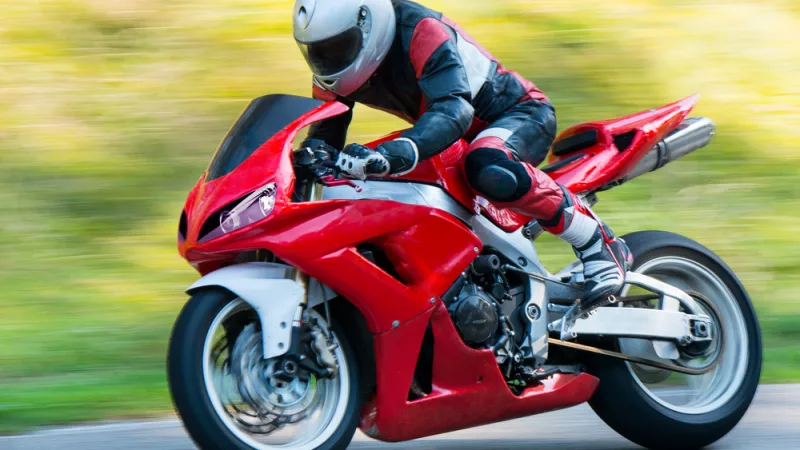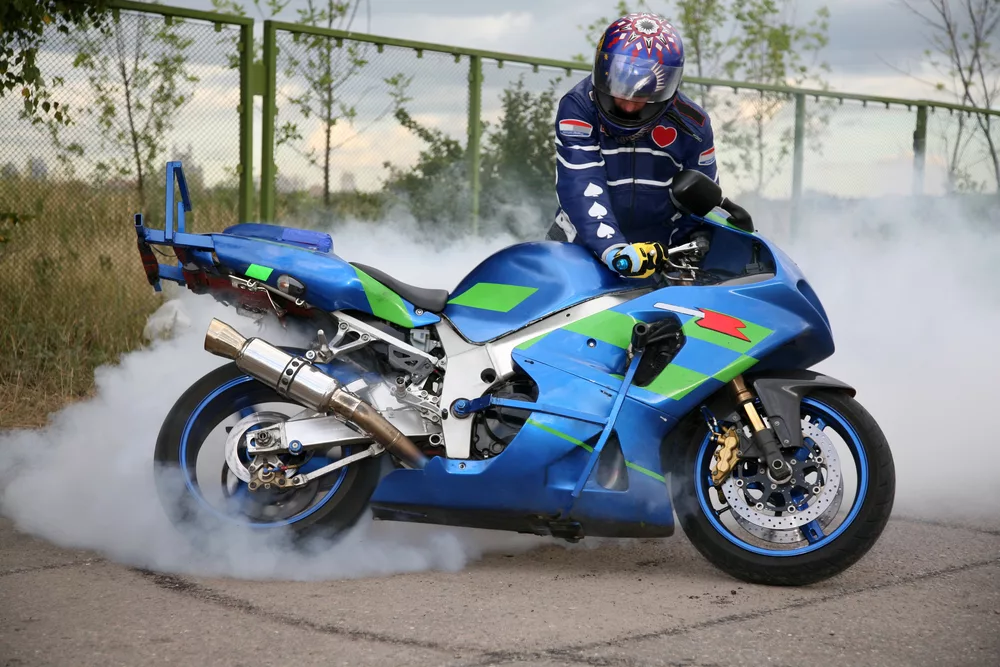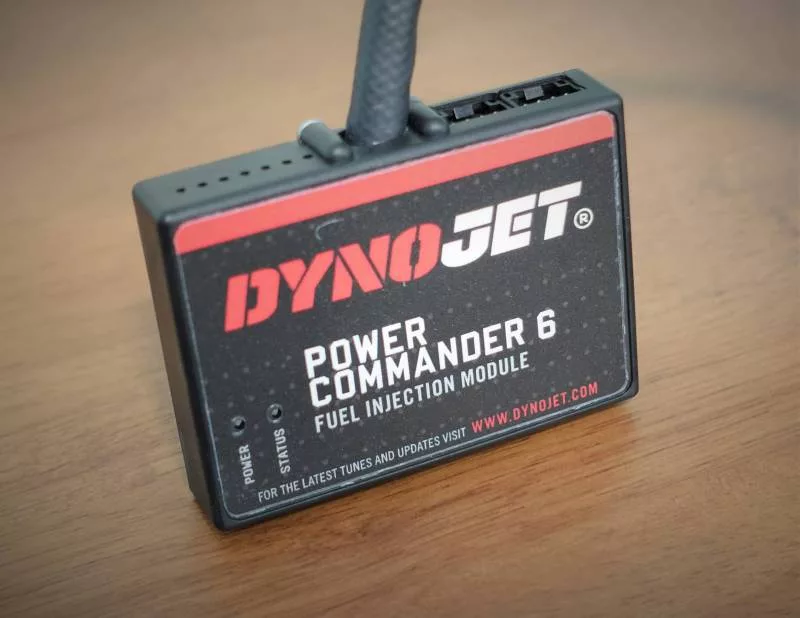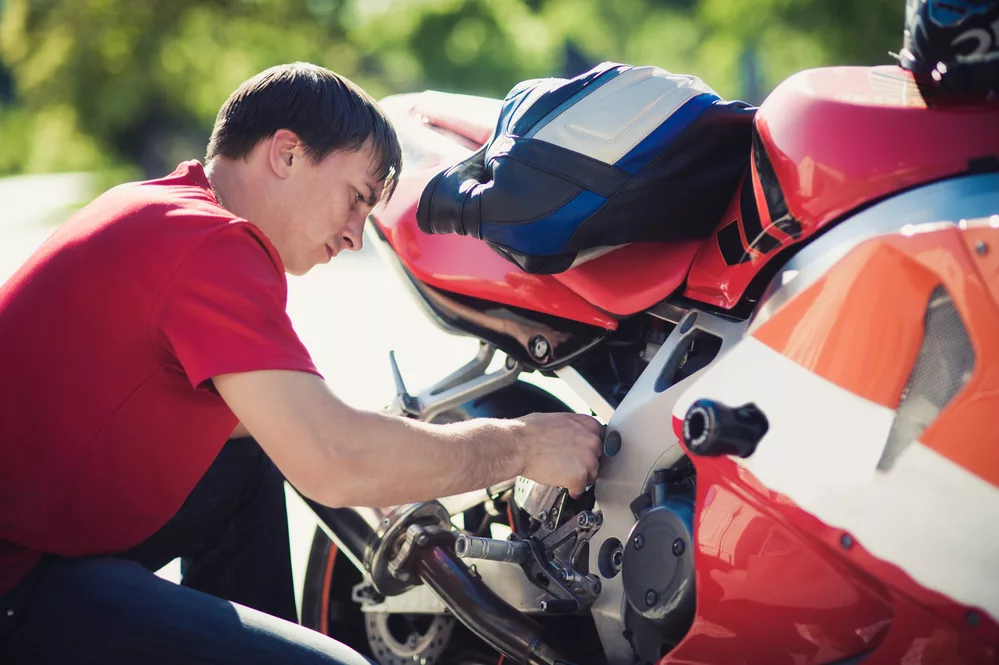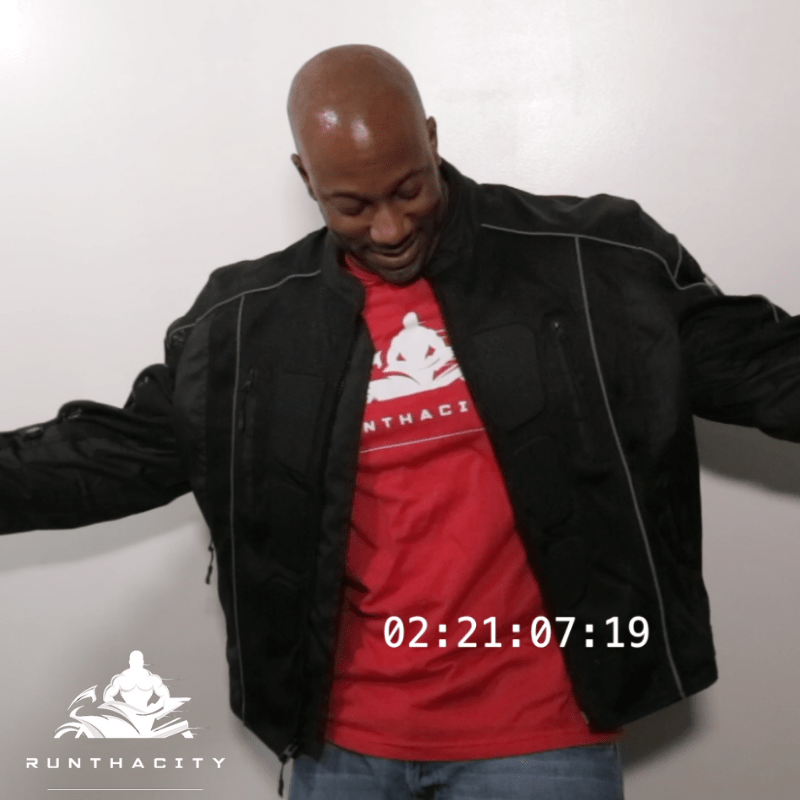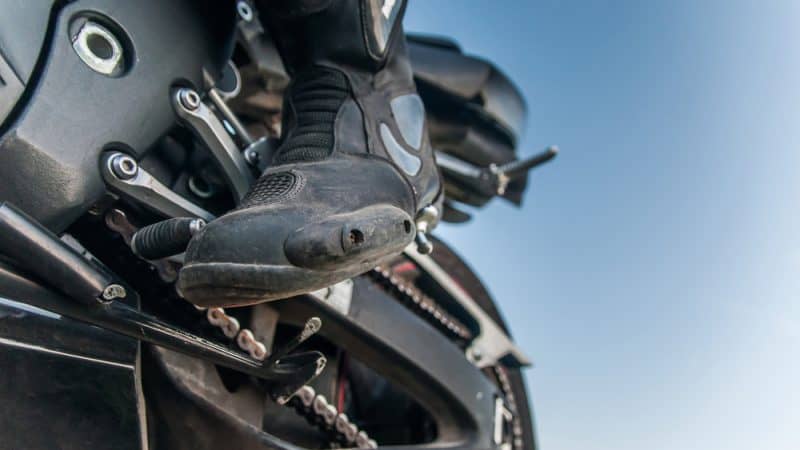If you have made the decision to buy a motorcycle, you have probably set your budget and decided what bike is best for your needs. For many people, the cost of a brand-new motorcycle is out of their price range so they decide to go with a used bike. However, you want to be sure you purchase a bike that is in good condition, mechanically sound and will last you a long time.
With so many options available to find used bikes, it can be difficult to decide the best place to go to purchase yours. These are some of the best places to find used motorcycles and some tips on what to watch for when you use these services. If you’re wondering how to buy a motorcycle, here is another great article.
Where Can I Buy Used Motorcycles Online?
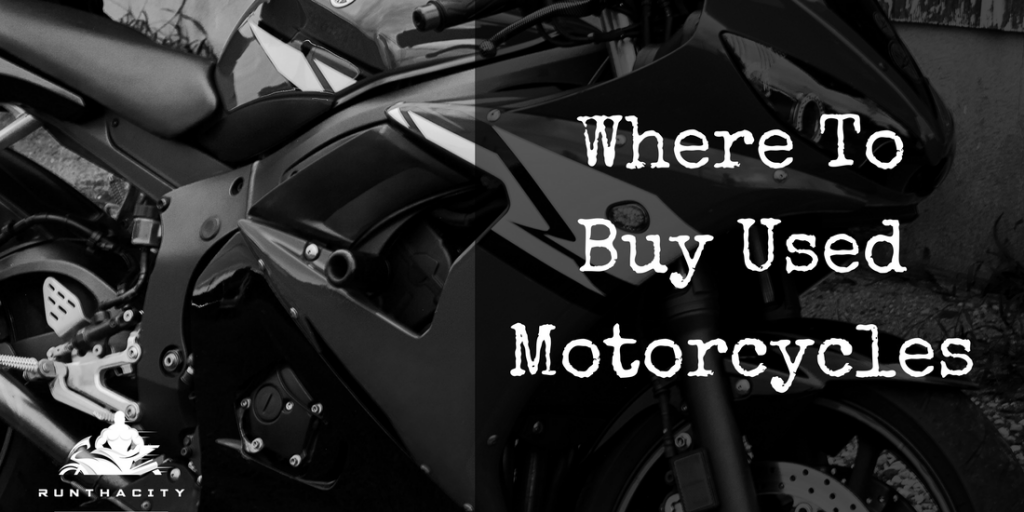
Get Cheap Used Motorcycles On Craigslist
You can find almost any type of bike available on Craigslist but there are some precautions you should take. Many people who sell on Craigslist are unaware of the true value of what they are selling, so it is possible to get good bargains there.
However, there are also many people who believe the old bike they refurbished is worth much more than it actually is, so it is important to do your homework before you answer an ad. Also remember that Craigslist is a true “buyer beware” option. If the motorcycle fails mechanically in a few months, you have no recourse against the seller.
Buy Cheap Used Motorcycles On Ebay
If you are searching for a hard-to-find bike, Ebay may be your best option. The biggest benefit to Ebay is that you don’t have to talk to the seller until you are ready to buy. Questions can be answered through the Ebay message system. Even when you are ready to buy, you don’t need to talk to the seller. Simply purchase the bike, pay online and it will arrive at your door.
This means you never get to test drive the bike nor do you get to have it checked out mechanically before you purchase. Although Ebay does have buyer protections, it can be a difficult process to manage. The bikes on Ebay are historically more expensive and there could be shipping costs involved which could drive the cost up significantly.
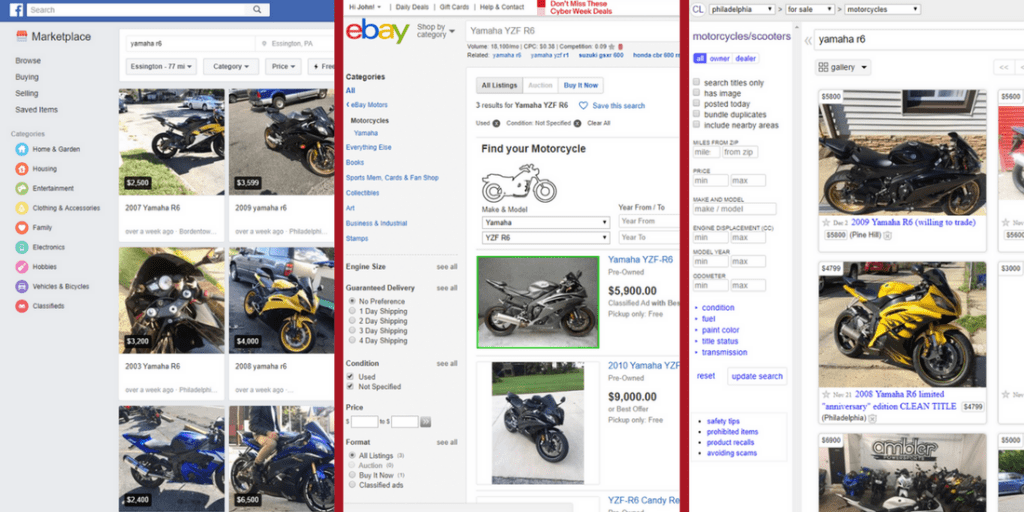
Find “Motorcycles For Sale Near Me” In The Classifieds
Fewer people check classified advertisements as newspapers slowly fade into the background and are replaced with online news sources. One of the benefits to checking the classifieds is that anyone who places an ad for a bike is motivated to sell.
Classifieds require the seller to pay an up-front fee to place the ad, unlike Ebay, where you only pay if the bike sells, or Craigslist, where you don’t pay at all. There are often small, local companies that publish nothing but classifieds in flyers and booklets where you may find bargains on used bikes.
Buy Used Motorcycles From Local Dealers
Dealerships take trade-in bikes all the time, so they often have a large inventory of motorcycles available. Many dealers also offer limited warranties on used bikes so if there is a problem, you may not be left with the bill to repair it. Dealers also have a reputation to uphold, and although there are some bad dealerships, the majority work to make sure you are satisfied with your purchase.
Dealers can also help guide newer riders to bikes that are suited for them. Although dealership bikes may be more expensive due to the overhead the company must pay, having a dealer back the used bike is worth the added cost in the long run.
Cheap Motorcycles For Sale On Facebook Marketplace
Facebook Marketplace has become really popular for buying and selling motorcycles and motorcycle parts. You can discover bikes for sale near you. Easy to use on your phone or your desktop, and most people already have a Facebook account. In fact that is how I found my 2004 Yamaha YZF-R6 (Second Generation). With Facebook Marketplace you can search by brand, model, year, price, and distance from your location. Once you find a bike you’re interested in simply message the seller.
Bonus Buyer’s Tip: Depending on the sellers Facebook settings, you may be able to see a few extra pics of the motorcycle and its condition by checking out the sellers profile. Most motorcycle lovers are proud of our rides and will have multiple pics posted. Simply click on the sellers profile and view images.
Take a look at a few other places you can buy used sportbikes online:
The Best Apps to Buy Used Motorcycles

One option for selling your bike online, designed specifically for buying or selling motorcycles, is RumbleOn. The site is available as a mobile app that allows you to put in all the info about your bike, take photos and upload to the site. RumbleOn sends you a Cash Offer Voucher that is good for three days. If you agree, they come get the bike and handle all the paperwork.
CycleTrader is another app that allows you to sell motorcycles and also includes reviews cars available online.
These apps are available in the Apple or Google Play Store:
Google Play Store Apps
On Apple Itunes Apps
These are just a few places where you can find used motorcycles for sale. Word-of-mouth is another way to find bikes for sale. A friend may know a friend who wants to get rid of their bike or a co-worker may be looking at upgrading. If you want to learn more tips on buying used bikes, subscribe to my YouTube channel today.
You Might also like
-
Maximizing Performance: Upgrades for Your Sportbike
Riding a sportbike is a thrilling experience, but even the most advanced models can benefit from performance upgrades. Whether you’re a competitive racer or simply enjoy the thrill of high-speed riding, there are several modifications you can make to enhance the performance of your sportbike.
No products found.
Upgrade Your Exhaust System: Unlock Hidden Power with an Exhaust System Upgrade
An exhaust system is an essential component of any engine, as it controls the flow of gases generated during combustion. The stock exhaust system on most sportbikes is designed to meet noise and emissions regulations, which can limit the performance of the engine.
However, aftermarket exhaust systems can offer improved airflow, allowing the engine to breathe more easily and increasing horsepower. An aftermarket exhaust system can be made from materials that are lighter and stronger than the stock system, reducing weight and improving performance. Additionally, aftermarket exhaust systems often feature larger-diameter pipes, which allow for greater airflow and improved power output.
If you’re looking for the greatest gains in performance, consider a full exhaust system replacement, including headers and muffler. The headers are the tubes that carry the exhaust gases from the engine to the muffler, and an aftermarket set can be designed with a larger diameter and improved shape to reduce backpressure and increase horsepower. The muffler is responsible for controlling noise levels, and an aftermarket muffler can offer improved sound and performance while still meeting noise regulations.
Upgrading your sportbike’s exhaust system can unlock hidden power and enhance its performance. While the stock exhaust system may meet noise and emissions regulations, it can limit the engine’s ability to breathe and generate power. An aftermarket exhaust system, including headers and muffler, can improve airflow and increase horsepower, allowing you to get the most out of your sportbike.
No products found.
Enhance Your Air Intake: Breath Easy with an Air Intake Upgrade
The air intake system is responsible for delivering air to the engine, and it can play a crucial role in determining the performance of the engine. The stock air intake system on most sportbikes is designed to meet emissions regulations, which can restrict the airflow to the engine and reduce performance.
Upgrading to a high-flow air filter or a cold air intake can increase the amount of air entering the engine, providing a noticeable improvement in horsepower. High-flow air filters allow for a greater volume of air to enter the engine, providing a more oxygen-rich mixture that can improve combustion and increase horsepower. Cold air intakes work by relocating the air filter to a location outside the engine bay, where it can draw in cooler, denser air. This increased airflow can provide a noticeable improvement in horsepower.
Enhancing your air intake system can provide a noticeable improvement in horsepower and performance. The stock air intake system on most sportbikes is designed to meet emissions regulations, which can restrict airflow to the engine and reduce performance. Upgrading to a high-flow air filter or a cold air intake can increase the amount of air entering the engine, providing a more oxygen-rich mixture and a noticeable improvement in horsepower.
Fine-Tune Your Engine Management System: Re-Map Your Engine or Install a Power Commander
The engine management system is responsible for controlling the fuel and air mixture delivered to the engine, and it plays a critical role in determining the performance of the engine. The stock engine management system on most sportbikes is designed to meet emissions regulations, which can be restrictive and limit performance.
Installing a Power Commander or having the engine management system re-mapped can improve throttle response and power delivery, allowing the engine to operate more efficiently. A Power Commander is an aftermarket device that allows you to fine-tune the engine management system by adjusting the fuel and air mixture delivered to the engine. This can provide improved throttle response and increased power output, allowing you to get the most out of your sportbike.
Re-mapping the engine management system involves modifying the software that controls the fuel and air mixture delivered to the engine. This can provide improved throttle response and increased power output, allowing the engine to operate more efficiently.
Fine-tuning your engine management system can provide noticeable improvements in throttle response and power delivery. The stock engine management system on most sportbikes is designed to meet emissions regulations, which can be restrictive and limit performance. Installing a Power Commander or having the engine management system re-mapped can provide improved throttle response and increased power output, allowing you to get the most out of your sportbike.
No products found.
Get the Ultimate Ride with a Suspension Upgrade: Suspension Upgrade
The suspension on a sportbike is one of the most important components in determining handling and stability. The stock suspension components on most sportbikes are designed to provide a balance between comfort and performance, but they may not meet the demands of all riders.
Upgrading to aftermarket suspension components, such as forks, shocks, and springs, can offer improved handling and a more comfortable ride. Suspension upgrades can also allow riders to fine-tune the suspension settings to suit their individual riding style and track conditions. High-performance suspension components can offer improved responsiveness and stability, allowing you to get the most out of your sportbike.
Forks and shocks are two of the most important suspension components, and upgrading them can offer a noticeable improvement in handling and stability. Upgraded forks can provide improved responsiveness, allowing you to negotiate turns with greater ease. Upgraded shocks can provide improved damping, allowing the rear tire to remain in contact with the road, even under hard acceleration or braking.
A suspension upgrade can provide a noticeable improvement in handling and stability, as well as a more comfortable ride. The stock suspension components on most sportbikes are designed to provide a balance between comfort and performance, but they may not meet the demands of all riders. Upgrading to aftermarket suspension components, such as forks, shocks, and springs, can allow riders to fine-tune the suspension settings to suit their individual riding style and track conditions.
No products found.
Stop on a Dime with a Brake Upgrade: Brake Upgrade
Braking performance is critical for riders who like to push the limits of their sportbike’s performance. The stock brake components on most sportbikes are designed to provide a balance between performance and affordability, but they may not meet the demands of all riders.
Upgrading to high-performance brake pads and larger rotors can provide a noticeable improvement in braking performance, helping riders feel more confident on the track or road. High-performance brake pads can offer improved bite and modulation, allowing you to stop quickly and smoothly. Larger rotors can provide improved heat dissipation and stopping power, allowing you to slow down faster and with greater confidence.
Upgrading your brake components can provide a noticeable improvement in braking performance, helping riders feel more confident on the track or road. The stock brake components on most sportbikes are designed to provide a balance between performance and affordability, but they may not meet the demands of all riders. Upgrading to high-performance brake pads and larger rotors can provide improved bite and modulation, as well as increased stopping power, allowing you to stop quickly and confidently.
Conclusion
In conclusion, upgrading your sportbike can significantly enhance its performance and make it even more enjoyable to ride. These modifications can improve power delivery, handling, braking, and overall ride quality. However, it’s important to choose upgrades that are compatible with your bike and to have them installed by a professional to ensure optimal performance and safety. Whether you’re looking for a competitive edge or simply want to improve your riding experience, there are many options available for maximizing the performance of your sportbike.
-
Viking Cycle – Warlock Textile Motorcycle Jacket Review
Finding a Great Entry-Level Cycle Jacket - Viking Warlock Jacket Review
When critiquing motorcycle jackets, we have a tendency to judge them by the standards and needs of long-term, experienced cyclists. The unfortunate truth is that, for those just getting into motorcycling, these criteria may be a good bit different. For one thing, beginners will tend to spend somewhat less time on their bikes as they’re still getting a feel for them, and they’re less likely to be out there in the more extreme temperatures of high summer and mid-winter.
This means that some forgiveness in fitting and materials is called for when looking at a prospective first motorcycle jacket. In the case of the VikingCycle’s Warlock jacket, this may work out pretty well.
No products found.
The Look Of The Warlock Jacket
Well, let’s be honest with ourselves, we’re always going to demand that our jacket look really cool. It won’t do to look unstylish on our bikes, no matter if we’re a novice or a years-experienced rider. If the jacket doesn’t look good, nothing else matters. Maybe this isn’t the most prioritized way to think of things, but that’s just how it is.
While not the classic cruiser style so iconic in pop culture, this jacket does have a very modern classic vibe to it. It achieves a contemporary, unassuming but stylish look that blends many of the safety and comfort features of sport/street jackets, with the gentle form hugging and sleek nature that makes those cruiser jackets so beloved in the first place.
Moving forward, this even blend of these two styles will probably be somewhat timeless, which gives this jacket a unique future proof nature.
Comfort in a motorcycle jacket is a delicate balance. You don’t want to feel claustrophobic in the jacket, but at the same time, something too loose would have obvious problems. Similarly, you don’t want it to feel too bulky or heavy, but you want to feel like you’ve got something on. Finally, you want this balanced comfort to also provide good wind-cutting power, especially when it’s chilly out. Remember, the faster you go, the colder that air is going to be.
This jacket checks all but one of these boxes rather nicely. I felt like I had a solid jacket on, but I never felt claustrophobic, encumbered nor weighed down by it. The adjustable sleeves and collar meant that I didn’t feel like my circulation was cut off, but it still sealed me up well enough against the elements.
Unfortunately, the wind-cutting power of this jacket isn’t phenomenal, even with the liner in. It’s far from the worst, but in particularly chilly weather, the wind is still going to bite right into you with this jacket.
Motorcycle Jacket Safety
Safety is of course a big concern, especially for a beginner. This jacket manages to be pretty well-padded and abrasion-resistant, without feeling cumbersome. Granted, it’s not as fortified as a racing jacket, but I felt very safe in this jacket, especially thanks to the waist zipper that fastens to pants to provide a unified layer of protection.
It definitely passes my standards for safety, no question there.
VikingCycle’s Signature Rain Gear Fabric is a 100% 600D Polyester coated by PU (polyurethane). The 600D Polyester coated by PU, is also wind and water resistant so it will provide great protection against cold wind and rain and it will not sag and creates less wrinkle overtime. The fabric is light weight but highly resilient against abrasions to provide more resistance between the body and the road for your protection, and also stands against wear and tear for product durability.
No products found.
Bells and Whistles
Finally, we come to the additional accoutrements this jacket offers. It’s not the most elaborate design out there, but it’s not without its charms.
- Large zipper tabs make it easy to operate the zippers with gloves on – something that can be exquisitely frustrating.
- Plenty of inside pockets for your phone, your wallet, etc. where they’re protected from the elements and impacts.
- Removable liner makes this jacket comfortable for warm and cool riding.
Warlock Jacket Textile Motorcycle Jacket Overview
No products found.
Pros and Cons
Pros
- This is an affordable jacket, especially for the quality, which is a major deciding factor for the beginner motorcyclist.
- The inside pockets are a nice touch.
- The neutral, non-aggressive style is timeless, contemporary and pairs with any style of bike.
- The zippers are phenomenal.
Cons
- Removable liner takes most of the inner pockets with it, and doesn’t cut wind well.
- Velcro is used in stead of button clasps – this is a noisy material that wears out and accumulates “fuzz”.
- There are synthetic materials in the cuffs that may be less durable.
Warranty Information
VikingCycle takes the highest pride to provide the best motorcycle gear craftsmanship and material in the world. We always stand behind all our product quality. If you experience any manufacturing defects on any of our items, please let us know and return it for a replacement within 1 year of purchase.
This warranty does not cover any item damage due to normal wear and tear or improper care. Normal wear and tear is unavoidable and it is a sign that the product has been worn, such as small scratches or color change.
To claim any manufacturing defect warranty and to get your replacement as soon as possible, please let us know by emailing us at info@vikingcycle.com with your order number and a photo of the product defect.
Conclusion
This jacket’s not perfect, but then, is anything ever truly perfect? As a seasoned rider, I’d personally purchase this jacket. It is affordable, comfortable and a stylish first jacket for a beginner? I’d definitely be happy recommending the Warlock jacket.
To purchase, click here:
No products found.
To learn more about choosing the ideal motorcycle jacket for your needs, subscribe to my YouTube channel today!
No products found.
-
Beginner’s Guide To Shifting Gears On A Motorcycle
An underrated aspect of learning how to ride a motorcycle goes beyond turning and popping wheelies. No, it’s something seemingly much more simple than that. Do you shift? Sure, shifting gears should be easy, because it’s a basic function; but shifting gear does have a layer of complexity that beginning cyclists could have problems mastering right away.
Here’s everything you need to know about shifting gears on a motorcycle.Motorcycle Gears Basics
The three basic controls are ones that you might already know—the throttle, the clutch, and the gear selector. You use the throttle to rev the engine, the clutch to engage and disengage the brakes (transmission), and to select gears. For instance, if you pull the left hand clutch towards you, the engine revs without ever moving the bike.
The gear pattern can be clicked through by using the gear selector lever and is moved by your left foot. Most bikes have the following gears, starting with the lowest first:
• First gear
• Neutral
• Second gear
• Third gear
• Fourth gear
• Fifth gear
• Sixth gear (depending on the bike)
As you can see, shifting fears is sequential. Up or down, neutral (N) is always put between 1st and 2nd gear.Technique For Motorcycle Shifting
It’s best to learn the proper technique required to maneuver through shifting gears before learning how to do anything else.
Steps of the proper shifting technique:- Disengage the clutch. Use your left hand to pull it towards you.
- Select the correct gear by using your left food on the shifting lever.
- Slightly rev the engine if shifting up.
- Gradually release the clutch. Don’t pop it.
- Feather the throttle while releasing the clutch to accelerate smoothly.
- Continue revving if you which to switch to another gear in succession. Otherwise, find a nice cruising speed to maintain.
Shifting With Sound and Feel
Have you ever heard wailing motorcycle engines on the road? You’ve probably thought to yourself, “Is that rider even shifting?” That’s you using the basic rule of sound. In basic terms, if an engine starts to scream, you shift to an upper gear. If the engine starts to grumble, then shift the engine lower.
There a many methods to help you do this properly. Beginners should only focus on the simplest method. Afterwards, you can experiment.
Start off by riding in first gear. Try to sense to point when you need to switch to second gear. This means the engine isn’t yet screaming, but you are feeling the natural inclination to gain more speed. The clutch will disengage easily.
Should the engine start to scream, this means you’ve hit the red line, otherwise known as the built-in limiter. The limiter is placed in the engine to ensure the bike doesn’t overextend itself and burn up.
If you shift a gear up too soon, the bike could stall or choke. Restart the bike. Try again. Keep working through the gears until you can hear and feel when it is time to gear up.Shifting Smoothly
You will notice that there’s no mathematical equation to figure out the “when” behind shifting. Every bike has a unique behavior that depends on how you handle it. For instance, if the bike jerks when you release the clutch, you’re being too abrupt. If the bike tends to lurch during shifts, you’re applying too much throttle. If the motorcycle’s speed dips during shifting, you need to rev the engine more between gear changes. Pay attention to the clutch, throttle, and gear selector, because these all interact and are dependent on one another.
Mechanics of Movement
Let’s back-up for a moment. Now that you have this idea in your mind that you need to listen and feel and understand with muscle memory what to do when shifting, it’s time to talk about what is happening inside the bike while you’re doing the actions.
The clutch is the first thing you touch when it’s time to shift gears, unless you have an automatic motorcycle or a quick shift. Once the clutch is engaged, meaning the lever is out and power is send to the rear tie, little springs press on the clutch plate that connect the primary drive to the part that rotates from the pistons going up and down.
When you pull the lever, the plate separates and releases the connection to the motor. In this moment, you can change gears.
That’s when you take your foot and move the gear selector. On the gear selector is a piece called a collar that has “dogs.” This dogs mesh together with the fork in the same way you interlace your fingers. When you move your foot up and down on the selector, the dogs and fork connect to help change the gear. Then, you find the right gear and accelerate.
Keep this in mind while reading the next two sections about upshifting and downshifting.Upshifting
Most of this article has been devoted to upshifting. Upshifting is easier than downshifting, because you are accelerating. This means that if you do any of the steps of shifting a little too quick, there’s less of an impact. Of course, this could result in a sudden jolt of power to the rear wheel, causing the front tire to come off the ground.
(Note: You should only practice stunts in a controlled environment and when you have gained enough experience.)Downshifting
On the opposite end of upshifting is downshifting, which tends to go a little less smoothly. If you release the clutch too quickly while downshifting, the sudden downward change can cause the gear to slow down the rear tire, compressing the front end, and causing a lack of traction in the back end. You need to be able to control the release of the clutch.
Be careful when rounding corners and decreasing your gears for this reason. You don’t want to suddenly lose traction right when you need more grip on the asphalt. That could cause the bike to skid to the side.False Neutral
When downshifting, you could accidentally hit a false neutral. This can happen anywhere there shouldn’t be a neutral, including between 3rd and 4th or 4th and 5th and so on. This could happen if the dogs don’t connect with the fork when selecting gears. There is power loss to the rear wheel.
If you end up in a false neutral, pull on the clutch, and put the bike into a higher gear. You can prevent excessive damage to the bike. Be quick and make sure you move into the correct once you get out of false neutral.
With that, you should be able to master the basics of shifting. Practice the timing of the clutch release and working with the gear selector for a bit. You will soon be able to shift between gears like someone who has been riding for many years.
Liked this article and want more beginner motorcycle tips? Check out my YouTube channel and don’t forget to hit that subscribe button.


